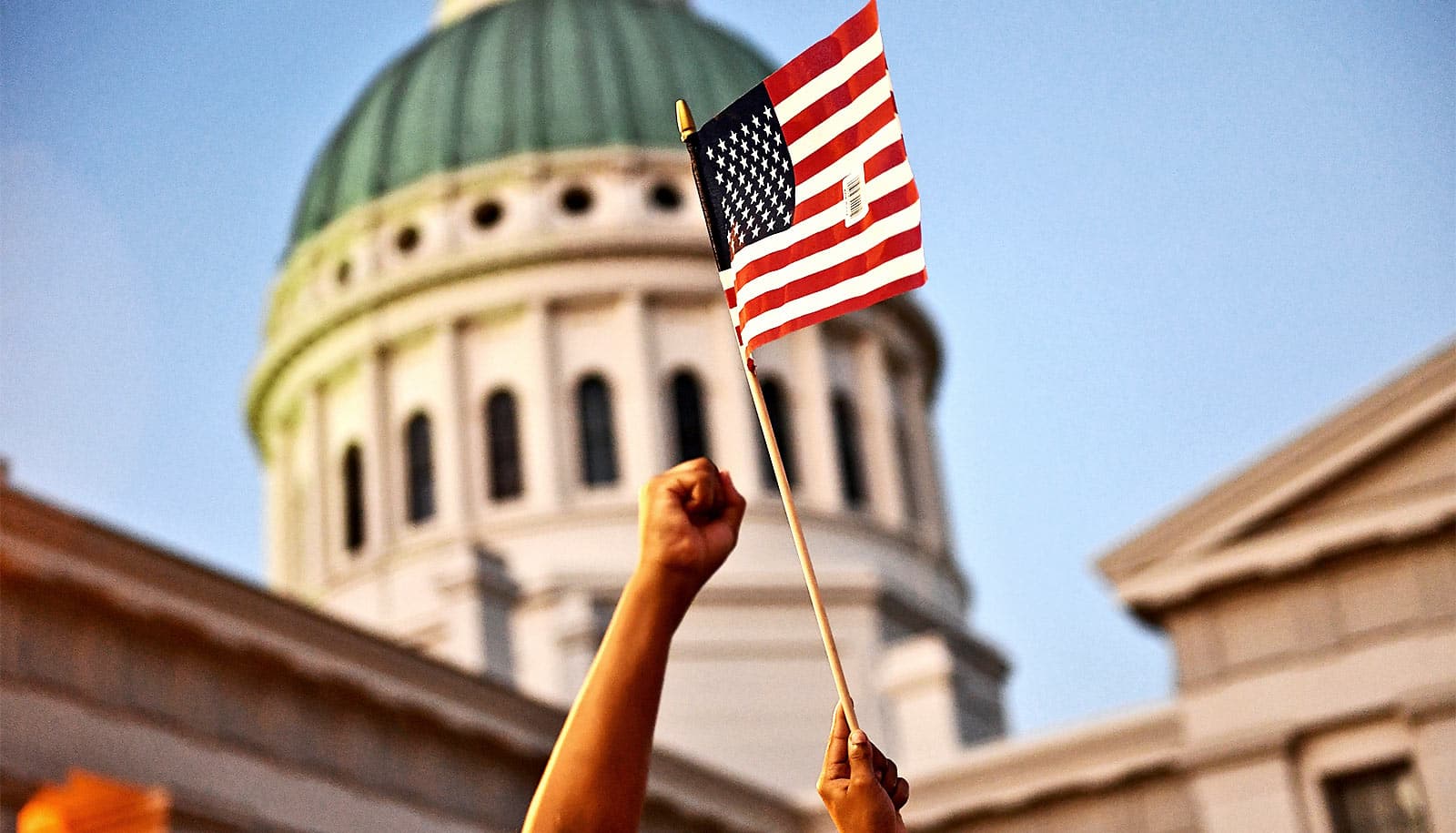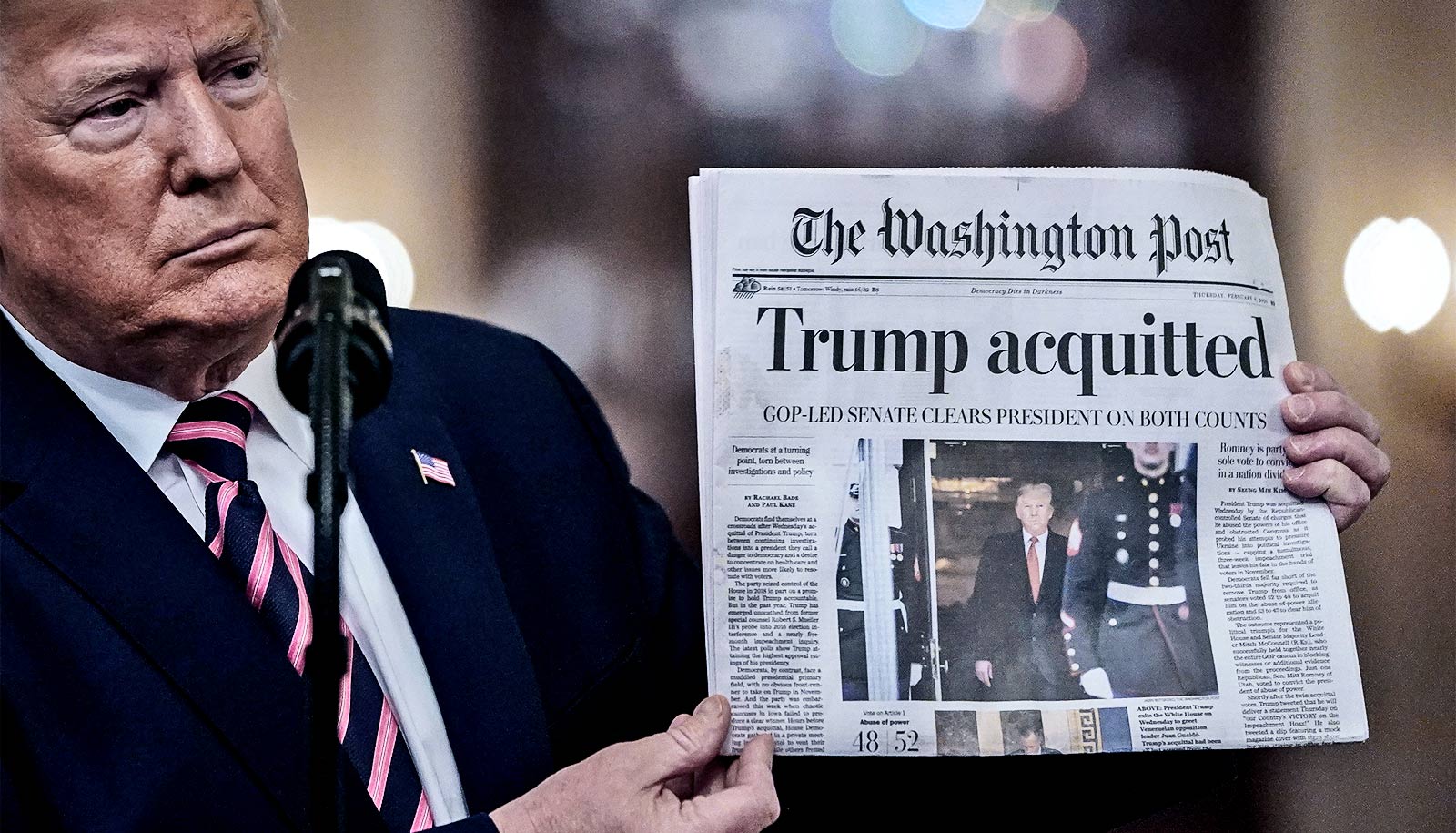The United States was celebrated as the world’s first modern democracy, but its founders feared that distrust in government could be its undoing, the author of a new book says.
Two decades ago, protestors disrupted a meeting of the World Trade Organization in Seattle with multiple days of demonstrations and property destruction. They punctuated their actions with a now-world-famous chant, “This is what democracy looks like!”
Since then, other activists have taken up the phrase as a rallying cry for everything from protesting police brutality, most recently during demonstrations in response to the killing of George Floyd, to advocating for women’s rights and blasting corporations. The line even found its way into a modernized production of Shakespeare’s Julius Caesar in Central Park in 2017.
But what does democracy actually look like?
You won’t find the answer just by looking to a familiar origin story about ancient Greece, says David Stasavage, a professor in the politics department, dean for the social sciences at New York University, and author of the newly released The Decline and Rise of Democracy: A Global History from Antiquity to Today (Princeton University Press, 2020).
While this form of government dates back thousands of years and covers multiple continents, Stasavage’s research shows that its contours are varied, with no two democracies looking exactly alike. Some lacked constitutions and even elections, Stasavage says, but nonetheless “still adhered to the principle that the people ought to hold some sort of power.”
Questions about what a democracy can or should be are very much alive in the US today, amidst a pandemic that has tested faith in local, state, and federal government responses in what already would have been a contentious presidential election year. While many saw the suffering caused by COVID-19 as the result of a failure of an elected government to protect and serve its citizens, demonstrators this spring compared restrictions designed to halt the virus’s spread to “tyranny”—implying they were democracy’s true defenders.
More globally, some historians, such as Michael Lind, have expressed concerns about democracy’s viability, sounding alarm bells over its “decay” in Western Europe and North America. But others, including Jill Lepore, have acknowledged that while the 21st century has seen a decline in the number of democracies, the concept has previously survived dire threats—such as in the 1930s, when industrialized nations turned to fascism.
Here, Stasavage explains where democracy has been, where it’s headed, and why he remains cautiously optimistic about its survival—provided we heed history’s lessons:
Did the Greeks actually “invent” democracy?
The Greeks gave us the word demokratia, which in its literal sense means that the people have power. But they were not the only ones to come up with the idea.
A great many human societies over time have ruled themselves with this basic notion in mind. From the woodlands of Northeastern America prior to European conquest to Ancient Mesopotamia to Precolonial Africa, many societies operated under the basic principle that those who ruled should seek consent from their people before making decisions. Even if these societies did not have elections or written constitutions, they still adhered to the principle that the people ought to hold some sort of power.
I call this pattern early democracy, and it involved a very deep form of political participation for those who had the right to it.
How does the form of government we have in the United States compare to those earlier versions of democracy?
The United States was the first modern democracy. Modern democracy differs from early democracy in two important ways. The first involves the emphasis on election of leaders. Rather than oblige leaders to continually seek popular input, as was the case in early democracy, we elect them for a period of several years, then allow them to go about the business of governing, and finally decide whether to reelect them.
The second difference is that with a broad suffrage, modern democracy extends the right of political participation to more people than was the case in most early democracies. Over time, as previously marginalized groups—including African Americans, women, and those without property—asserted their rights, modern democracy has come to mean the possibility of political participation for all adults.
The potential downside of modern democracy, in the US and elsewhere, is that it offers a form of political participation that is broad but which risks not being very deep. Simply having the right to vote every few years may not be sufficient to satisfy people’s need for participation.
You write that the nation’s founders, despite their foresight in many areas, “did not solve the problem of distrust” of government. What would they make of the current moment, when we find trust in government at a near-historic low?
One common fear expressed by the Antifederalists, who opposed ratifying the Constitution, was that in a republic covering such a vast territory, the great mass of the population would be too distant from the seat of power. They might be able to participate in elections every few years, but between those moments, they would lack any connection with government. The feared consequence of this problem of scale was that the people would begin to distrust government, while also being susceptible to 18th-century versions of fake news.
In Federalist 10, James Madison tried to downplay such fears, but a few short years after the ratification of the Constitution he would change his tune. He didn’t shift to saying that small republics were actually better, but he did say that in a republic on the scale of the United States, constant investments needed to be made to keep the people informed of and connected with government. To achieve this Madison argued that there should be subsidies for newspaper delivery, and this was something that happened with the Postal Service Act of 1792.
When we consider the problem of low trust in government today, we should recognize this past lesson. Today we have technologies that couldn’t be imagined back in 1792— most people could drown themselves in information if they sought to—but even so, the problem of scale has never been fully solved. Even today, and in fact especially today, we need to consider what new investments can be made so that people feel more connected with, and therefore less distrustful of government. It’s interesting to note here that Americans today continue to be much more trusting of state and local government—the forms that feel closer to them—when compared with a more distant federal government located “in Washington.”
You discuss the “disappearance of democracy” in certain parts of the world. What are the factors that have endangered it?
The fate of democracy has always depended on the balance of power between those who rule and those who are ruled. Throughout much of history the development of a bureaucratic state posed the greatest challenge to democracy because it gave those who ruled the ability to dispense with the need for popular participation in government. Rulers who lacked a bureaucratic state had to rely on their people to assist with basic tasks of government, such as assessing and collecting taxes. In other words, they had to adopt early democracy.
Once rulers succeeded in creating a bureaucratic state—as would happen in China from a very early date, and as would eventually happen in the Middle East—they could then carry out these functions of government on their own, without popular participation. One of the great ironies here is that in many cases, things we usually associate with the advance of civilization—writing, techniques for measurement, a better understanding of the soil—helped make this autocratic alternative more feasible.
Conversely, what are the forces that have spurred changes toward democracy—such as in England or Europe?
There were two important factors here. The first is that European countries for a very long time lacked the sort of strong bureaucratic states with advanced technologies (for the time) that emerged in China and the Middle East. In the medieval and early modern periods Europe’s backwardness in this area meant that its rulers were continually obliged to seek the assistance and support of their people when governing; they formed councils, assemblies, and parliaments. European countries did eventually develop strong bureaucratic states, but this did not happen until after the parliamentary tradition became very firmly anchored.
The second factor was that over time, as a result of military competition and changes in military technology, European rulers came to need the great mass of their people more than ever to fight, and so, based on the principle that some called “one man, one gun, one vote,” rulers extended the right to vote to all adult males in exchange for popular acceptance of universal conscription. This helped lead to the advent of modern democracy in Europe.
You write that your book gives us reasons to be hopeful about the future of democracy. Why is that?
The most basic reason for hope is that democracy is not something that was invented in one place at one time by one society. Rather, it is a basic way that many human societies have governed themselves. That’s one reason why we should not be so surprised today to see vibrant democracies in places like Sub-Saharan Africa, where 30 years ago some observers forecast that this would not happen. But just because democracy will survive somewhere does not mean that American democracy as we know it is also certain to endure. That is something that will depend on finding new ways to help people feel more connected to and less distrustful of government.
Source: NYU



